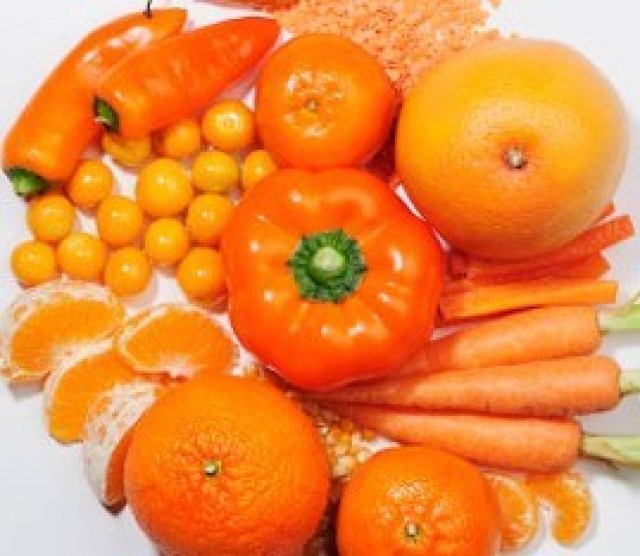Carotenes are photosynthetic pigments important for photosynthesis. Carotenes contain no oxygen atoms. They absorb ultraviolet, violet, and blue light and scatter orange or red light, and (in low concentrations) yellow light.
Carotenes are responsible for the orange colour of the carrot, for which this class of chemicals is named, and for the colours of many other fruits, vegetables and fungi . Carotenes are also responsible for the orange (but not all of the yellow) colours in dry foliage. They also impart the yellow coloration to milk-fat and butter. Omnivorous animal species which are relatively poor converters of coloured dietary carotenoids to colourless retinoids have yellowed-coloured body fat, as a result of the carotenoid retention from the vegetable portion of their diet. The typical yellow-coloured fat of humans and chickens is a result of fat storage of carotenes from their diets.
Carotenes contribute to photosynthesis by transmitting the light energy they absorb to chlorophyll. They also protect plant tissues by helping to absorb the energy from singlet oxygen, an excited form of the oxygen molecule O2 which is formed during photosynthesis.
?-Carotene is composed of two retinyl groups, and is broken down in the mucosa of the human small intestine by ?-carotene 15,15'-monooxygenase to retinal, a form of vitamin A. ?-Carotene can be stored in the liver and body fat and converted to retinal as needed, thus making it a form of vitamin A for humans and some other mammals.
Animal species differ greatly in their ability to convert retinyl containing carotenoids to retinals. Carnivores in general are poor converters of dietary ionone-containing carotenoids. Pure carnivores such as ferrets lack ?-carotene 15,15'-monooxygenase and cannot convert any carotenoids to retinals at all while cats can convert a trace of ?-carotene to retinol, although the amount is totally insufficient for meeting their daily retinol needs.

